 |
 |
 |
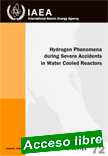 |
Hydrogen Phenomena during Severe Accidents in Water Cooled Reactors
IAEA ¦ Training Course Series No. 72 ¦ 88 pages ¦ 41 figures ¦ Date published: 2021
This Training Course Series publication is aimed at providing substantive details of hydrogen behaviour fundamentals with sufficient background information to enable readers to understand generation, propagation, combustion and mitigation of hydrogen during severe accidents in water cooled power reactors.
|
Examples demonstrating the theory fundamentals are included. This introductory text can be used to gain a conceptual understanding of the relevant phenomena to build foundational knowledge for further education on hydrogen behaviour during severe accidents. The content is closely linked with IAEA-TECDOC-1939, Developments in the Analysis and Management of Combustible Gases in Severe Accidents in Water Cooled Reactors following the Fukushima Daiichi Accident. This information included here can be applied directly in training courses.
|
 |
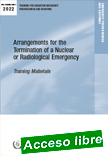 |
Arrangements for the Termination of a Nuclear or Radiological Emergency
Emergency Preparedness and Response ¦ Date published: 2022
Under Article 5.b(ii) of the Convention on Assistance in the Case of a Nuclear Accident or Radiological Emergency, one function of the IAEA is to assist, upon request, a State Party or Member State in developing appropriate training programmes for personnel to deal with nuclear and radiological emergencies. The presented training materials are intended to be used for these purposes.
|
In March 2018, IAEA Safety Standards Series No. GSG-11, Arrangements for the Termination of a Nuclear or Radiological Emergency, was published, jointly sponsored by ten international intergovernmental organizations. This Safety Guide provides guidance and recommendations on the emergency arrangements for the termination of a nuclear or radiological emergency and the subsequent transition from an emergency exposure situation to either an existing exposure situation or a planned exposure situation. It also includes detailed prerequisites that are expected to be met so that the authorities can formally declare an emergency ended and provides guidance on adapting and lifting protective actions.
|
 |
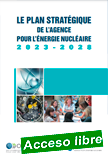 |
Le plan stratégique de l’Agence de l’OCDE pour l’énergie nucléaire 2023-2028
Agence Pour L’Énergie Nucléaire AEN, OECD, 2022. French.
Le Plan stratégique a pour objectif d’orienter l’Agence de l’OCDE pour l’énergie nucléaire (AEN) dans les travaux qu’elle mène pour répondre aux priorités et aux besoins des pays membres et de leurs évolutions au regard de l’étude et de l’application des sciences et technologies nucléaires. Le présent document contient une description du contexte dans lequel le Plan a été élaboré, en tenant compte de l’évolution mondiale des politiques, des besoins, des priorités et des technologies.
|
Il énonce la mission et la vision de l’Agence, sa stratégie générale et ses objectifs stratégiques. Le plan présente également les instances de gouvernance de l’Agence et les interactions de celle-ci avec les organisations et groupes externes, les organes de l’OCDE, les institutions académiques, la société civile, les pays non membres et l’industrie nucléaire.
|
 |
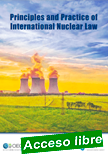 |
Principles and Practice of International Nuclear Law
Nuclear Energy Agency NEA No. 7599, OECD, 2022.
Principles and Practice of International Nuclear Law examines the various interrelated legal issues for the safe, efficient and secure use of nuclear energy. It provides an overview of the complex body of laws and legal regimes in international nuclear law, as well as the many developments that have unfolded in recent years impacting all aspects of nuclear safety, security, safeguards and liability.
|
It also gives a concise overview of the main international institutions, and addresses such issues as radiological protection, nuclear safety, environmental protection, nuclear transport, nuclear security, safeguards, nuclear third party liability and compensation for nuclear damage, insurance, nuclear trade and project development. The articles in Principles and Practice of International Nuclear Law are largely authored by lecturers at the International School of Nuclear Law (ISNL), which was established in 2001 by the OECD Nuclear Energy Agency (NEA) in co-operation with the University of Montpellier and which benefits from the support of the International Atomic Energy Agency. For over 20 years the ISNL has offered a unique educational opportunity to the next generation of nuclear professionals from more than 100 countries.
|
 |
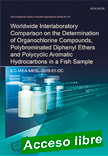 |
Worldwide Interlaboratory Comparison on the Determination of Organochlorine Compounds, Polybrominated Diphenyl Ethers and Polycyclic Aromatic Hydrocarbons in a Fish Sample
IAEA Analytical Quality in Nuclear Applications Series No. 66 ¦ 204 pages ¦ 18 figures ¦ Date published: 2022
The marine environment, as a global sink of persistent chemical mixtures, needs to be regularly monitored to assess the status of pollution and its impact on different marine compartments. Policy makers need access to reliable, accurate and comparable analytical data to enable sound management of the marine environment.
|
Among the goals of the IAEA Marine Environmental Laboratories is to assist Member States in understanding, monitoring and protecting the marine environment. In this scope, the Marine Environmental Studies Laboratory (MESL) in Monaco acts as an analytical support centre for the analysis of organic contaminants and trace elements in the marine environment. This is achieved by organizing worldwide laboratory performance studies, also known as interlaboratory comparisons (ILCs), by producing certified reference materials and by conducting training courses on the analysis of contaminants in marine samples.
|
 |
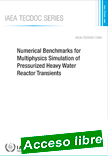 |
Numerical Benchmarks for Multiphysics Simulation of Pressurized Heavy Water Reactor Transients - WN-Mar/22
IAEA TECDOC No. 1994 ¦ English ¦ 176 pages ¦ Date published: 2022
This publication contains a description of the four numerical test problems, the multiphysics
methodologies applied and the simulations carried out, an independent synthesis of the results,
and the lessons learned from the exercise. The supplementary files available on-line provide
benchmarks’ input and output data.
|
.
|
 |
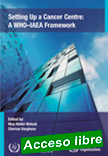 |
Setting Up a Cancer Centre: A WHO–IAEA Framework
STI/PUB/1989 ¦ English ¦ 104 pages ¦ Date published: 2022
Cancer centres are a major resource in ensuring a comprehensive approach to cancer treatment and its planning. As part of a new roadmap developed by WHO and IAEA to help countries design national cancer control programmes, this publication proposes a framework to develop a cancer centre and/or to strengthen the provision of services in an existing cancer centre. The publication provides the features of multidisciplinary cancer care and details the infrastructure, human resources and equipment for different services.
|
This framework is expected to be used as a guide to implementation, taking into consideration the local context and resources.
|
 |
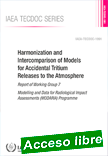 |
Harmonization and Intercomparison of Models for Accidental Tritium Releases to the Atmosphere: Report of Working Group 7 - Modelling and Data for Radiological Impact Assessments (MODARIA) Programme
IAEA TECDOC No. 1991 ¦ English ¦ 148 pages ¦ Date published: 2022
This report describes the work undertaken by Working Group 7 of the IAEA MODARIA Programme on the harmonization and intercomparison of models for accidental tritium releases.
|
This report is concerned with the pulsed release of tritium into the atmosphere and the subsequent terrestrial processes that determine the post-accident distribution of different
chemical forms of tritium in the environment.
|
 |
| |
|
|
 |
| |
|
|
 |
| |
|
|

|
|
|
| |
|
|
| |
| |
|
|
| |
| |
|
|
| |
| |
|
|
|
| |
| |
